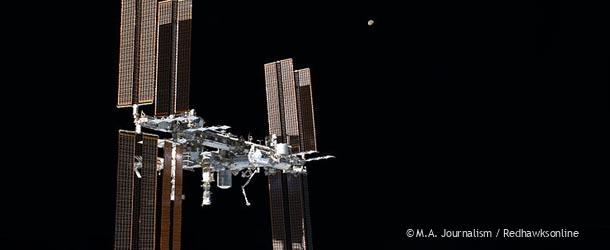The International Space Station Project brings new opportunities for students
Minnehaha has been to Europe, the Bahamas and even Haiti. But this year, we’re going to space!
“I hoped that it would excite students to be a part of a big science experiment that required students to use many different aspects of science not just one part, but everything from software and engineering to the life sciences to writing and documentary films,” said science teacher Nancy Cripe. “There was a place for anybody who was interested, even if they didn’t have a background, that they could learn from being a part of it and experience success from doing that.”
Minnehaha Academy was given the opportunity to participate in a project that will eventually head into space. Last spring, Minnehaha was contacted by Valley Christian School, located in California, to join in the International Space Station Project (ISS). Two years ago the California school began the project. This is the first year that schools outside of California are able to participate. Other than a Girl Scout troop from Hawaii, Minnehaha is the only school to be a participant in the ISS project besides California schools.
“I am interested in engineering and I wanted to learn more about computer science,” said junior Poppy Anema. “You have to use programming to be able to control the micro-environment in outer space from right here. I think that it will be a real life experience instead of doing something for course work in the classroom, where you know you have a set amount of results and there’s a right and a wrong. But in this [experiment] we get to totally create it and it’s an amazing experience.”
Students are to design a Micro Lab space experiment that will be sent to the International Space Station in a microgravity environment. Their project should be decided on by early September. The experiment is expected to be launched in March 2013. While the experiments are up in space, pictures will be taken of them and sent back to earth for the students to evaluate and watch what is happening.
“What a tremendous opportunity for our students to do something that has such relevant impact on their lives,” said Cripe. “An experiment that would have impact that would have something to do with space science.”
At the end of the 2011-12 school year, interested students were asked to apply to be a part of the project. Thirty-four applications were received and 16 students were accepted to be on the team. The science department and other administrators went through the applications to decide who would be accepted.
In the application, students were asked to list their background experience, not only in relation to science, but also leadership, journalism and what classes they had taken. Students were also asked to describe in 250-500 words why they wanted to be a part of this project.
Over the summer students were given a basic electronic kit to work on over the summer. In the kit, students worked on programming and basic electronic skills they will need later on in the project.
Another part of their summer assignment was to look on the NASA website at other projects that had already been sent up in space over the years to get ideas for theirs. Ideally, by the first part of September, the experiment will have been chosen.
Terfa hopes that students participating in the project will learn how the science that they learn in the classroom can connect to real life.
“It’s real world science,” said Terfa. “This is the same stuff that colleges and universities are doing, maybe not with the International Space Station, but in some ways. So this is really good preparation for students.”
“We checked out some of the past experiments,” said junior Poppy Anema. “We are hoping to come up with our own individual experiment but still use some ideas that other people have so we can build on that and make sure that our experiment is as good as it can be.”
The next two main steps for the team are to come up with an idea for their experiment and to find adult volunteers who have a background in engineering and computer programming.
The adult mentors will be helping the group by doing things like plan, design, build, and test their experiment.
“There are so many things that students can take away from this experience,” said Principal Nancy Johnson. “The biggest thing is that this is a real-live meaningful way to exercise their knowledge and interest in science. And I hope for the people that really love science, that this will just be an exciting thing to be involved in.”

